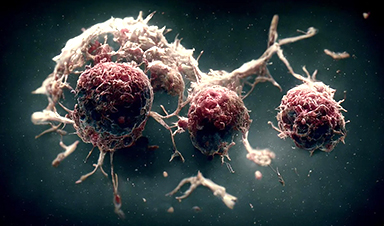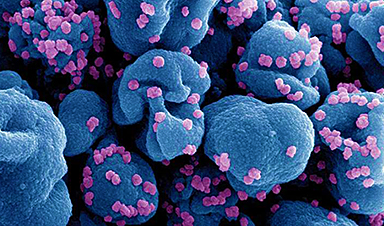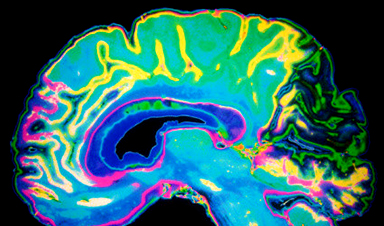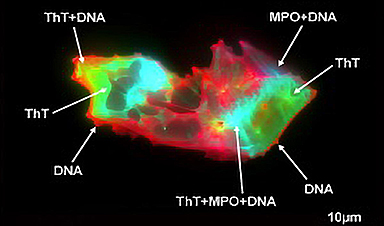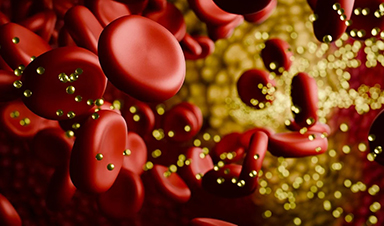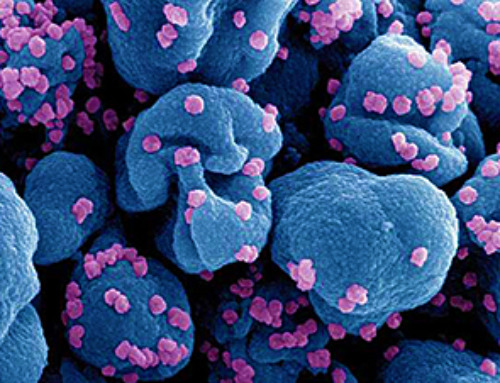Precision medicine is reshaping healthcare by tailoring treatments to individual patients based on their unique genetic, environmental, and lifestyle factors. At the forefront of this revolution, the integration of quantum computing and machine learning (ML) promises to bring faster, more accurate, and highly personalized diagnostics and therapies.
This article goes into some of the advancements in quantum algorithms that are driving this transformation, exploring breakthroughs in diagnostics, treatment optimization, and the development of ML models for individualized care.
Advancing Diagnostics with Quantum Algorithms
Accurate diagnostics form the foundation of effective medical treatment. Though highly developed, current diagnostic methods face limitations in processing the vast amount of patient-specific data generated through genomic sequencing, imaging, and biomarkers. Quantum algorithms like the Harrow-Hassidim-Lloyd (HHL) algorithm and Grover’s algorithm are emerging as game-changers in this domain.1,2
The HHL algorithm provides exponential speedups for solving linear systems, which are common in analyzing complex biological datasets. For example, it can accelerate the identification of disease markers by analyzing large-scale genomic data, enabling the rapid detection of patterns associated with specific conditions. Similarly, Grover’s algorithm can enhance the efficiency of database searches, making it possible to pinpoint rare genetic mutations or analyze medical images with unprecedented precision.1,2
Smarter Treatments with Quantum Optimization
Precision medicine thrives on identifying the most effective treatment for each patient, which requires solving complex optimization problems involving multiple variables, such as drug combinations, dosage levels, and treatment schedules. Quantum computing excels in this area, particularly through the application of quantum annealing and variational quantum algorithms (VQAs).
Quantum annealing facilitates the optimization of treatment pathways by exploring a vast solution space more efficiently than classical algorithms. For instance, in cancer therapy, finding the optimal combination of drugs and radiation doses often involves evaluating millions of potential strategies. Quantum systems can identify the most promising solutions in significantly less time, reducing the trial-and-error approach currently prevalent in treatment planning.
Moreover, variational quantum algorithms further enhance this process by dynamically adjusting parameters based on real-time feedback. These algorithms allow for the simulation of molecular interactions, helping researchers predict how a specific drug will interact with a patient’s unique genetic profile. Such insights accelerate drug discovery while ensuring higher efficacy and fewer side effects..3,4
Personalized Drug Discovery and Development
The journey of drug discovery has often been a long and costly one, typically taking over a decade to bring a new treatment to market. However, quantum algorithms are set to change this landscape dramatically by allowing scientists to simulate molecular interactions with remarkable precision and scale. One such algorithm, known as quantum phase estimation (QPE), is particularly effective at modeling quantum systems. This capability enables researchers to gain insights into complex interactions between drugs and their target proteins, which are crucial for treating specific diseases. By predicting how a drug molecule binds to a protein, QPE helps identify the most promising candidates for further development, significantly reducing the need for extensive physical experiments and thereby saving both time and money.4,5
Beyond improving efficiency in drug discovery, quantum simulations are also opening the way for more personalized medicine. By considering a patient’s unique genetic profile, these advanced simulations can recommend modifications to existing drugs or even inspire the creation of entirely new compounds tailored for maximum effectiveness. This level of personalization marks a significant advancement in pharmacogenomics, ensuring that treatments are better suited to individual patients’ needs.4,5
Quantum-Enhanced Machine Learning in Precision Medicine
QSVMs provide exponential improvements in classifying patient data, such as distinguishing between different subtypes of a disease. For instance, they can analyze subtle variations in gene expression profiles, helping oncologists identify specific cancer subtypes for targeted therapies. On the other hand, QNNs excel at pattern recognition tasks, particularly in predicting how patients will respond to various treatments. By leveraging the principles of quantum entanglement and superposition, QNNs can process multidimensional data more effectively than classical algorithms. This capability is essential for developing predictive models that consider genetics, lifestyle, and environmental factors to recommend highly personalized treatment plans.
Another significant contribution of QML is its ability to accelerate feature selection. In medical datasets, identifying the most relevant features—such as specific genes or biomarkers—can be computationally intensive. Quantum algorithms streamline this process, enabling faster and more accurate model development. This efficiency not only enhances the speed of research but also improves the potential for discovering novel treatment pathways tailored to individual patients’ needs.
As researchers continue to explore the intersection of quantum computing and precision medicine, the potential for QML to transform how we approach drug discovery and treatment personalization becomes increasingly evident. By harnessing the power of quantum technologies, we can unlock new possibilities for understanding complex biological systems and delivering more effective healthcare solutions..2
Precision medicine goes beyond initial diagnostics and treatment planning; it also involves continuous monitoring and adaptation to ensure optimal patient care. Quantum computing can significantly enhance these processes by enabling real-time analysis of patient data streams, such as wearable sensor outputs and electronic health records. This capability allows healthcare providers to respond swiftly to changes in a patient’s condition.
Quantum-inspired algorithms facilitate dynamic treatment adjustments by analyzing incoming data and recalibrating therapies as needed. For instance, patients undergoing chemotherapy often require dosage adjustments based on their body’s response to treatment. Quantum systems can process real-time data to optimize these dosages, helping to minimize side effects while maintaining treatment efficacy.
Moreover, QML models can identify early warning signs of adverse reactions or disease progression, allowing for timely interventions. This capability is particularly valuable in managing chronic conditions like diabetes or cardiovascular diseases, where continuous monitoring is essential for effective care. By leveraging the power of quantum computing, healthcare providers can implement more responsive and personalized treatment strategies that adapt to each patient’s unique needs in real time.1,2
Ethical Considerations and Challenges
While quantum computing offers huge potential, its integration into precision medicine raises significant ethical and technical challenges. Ensuring data privacy is paramount, as quantum algorithms often require access to sensitive patient information. As quantum computing advances, robust encryption protocols must evolve to safeguard patient confidentiality and prevent unauthorized access to personal health data.
Another challenge lies in bridging the gap between theoretical models and practical applications. Quantum hardware is still in its nascent stages, with scalability and error rates presenting significant limitations. Overcoming these hurdles will require collaboration among researchers, clinicians, and quantum computing experts to translate theoretical possibilities into real-world solutions.
Moreover, ethical concerns related to resource allocation and inequality must be addressed. The development of quantum technology often requires substantial resources that may only be accessible to a few nations, potentially exacerbating global socio-economic divides. There is also the risk of misuse of power; powerful quantum computers could break current encryption schemes, leading to breaches of privacy and security.
The complexity of quantum algorithms also raises issues of accountability and transparency. If a quantum algorithm makes a mistake or causes harm, understanding the reasons behind its actions can be challenging. This lack of explainability could hinder trust in quantum systems.
To navigate these challenges, organizations like the World Economic Forum and the National Academies of Sciences are constructing ethical frameworks for quantum computing. These frameworks aim to guide the responsible development and use of this technology, ensuring that it serves the common good while minimizing potential risks.2
Latest Research and Developments
Recent research highlights the expanding role of quantum algorithms in precision medicine, showcasing breakthroughs in drug discovery, genomic analysis, and personalized treatments through enhanced computational capabilities.
A recent study published in Scientific Reports developed a hybrid quantum computing pipeline specifically designed to tackle real-world drug discovery challenges, moving beyond mere proof-of-concept studies. This pipeline focuses on two critical tasks: accurately determining Gibbs free energy profiles for prodrug activation and simulating covalent bond interactions. By benchmarking quantum computing within realistic drug design scenarios, the study demonstrates its potential to address complex chemical interactions, propelling quantum computing toward practical integration into drug development workflows and offering scalable solutions to pharmaceutical challenges.6
Another study published in BMC Bioinformatics introduced a QNN architecture aimed at genetic biomarker discovery, addressing the substantial computational challenges associated with this task. Utilizing Maximum Relevance-Minimum Redundancy criteria, the model successfully identified biomarkers in CTLA4-associated pathways, including genes such as CLIC4, ETS2, and LCN2. The QNN model proved efficient and suitable for constrained hardware, demonstrating its utility across four CTLA4 activation pathways. This work underscores the potential of quantum artificial intelligence (AI) in uncovering critical genetic insights that are essential for advancing precision medicine and genetic research.7
These advancements reflect a growing recognition of how quantum computing can transform various aspects of healthcare by enabling more accurate analyses and fostering innovative approaches to treatment personalization.
Future Prospects and Conclusion
The journey toward quantum-powered precision medicine is inherently multidisciplinary, requiring collaboration across various fields such as bioinformatics, quantum physics, and clinical research. Initiatives like quantum computing hubs and partnerships between technology companies and healthcare organizations are accelerating this progress. As researchers and practitioners work together, they are laying the groundwork for advancements in healthcare that could significantly improve patient outcomes.
Looking ahead, promising areas of research include the integration of quantum computing with AI to create hybrid systems capable of autonomous decision-making in healthcare. This combination could enhance the ability to analyze complex datasets, leading to more accurate diagnostics and personalized treatment plans tailored to individual patients. Additionally, advancements in quantum hardware, particularly the development of error-corrected qubits, will further enhance the feasibility of applying quantum algorithms to precision medicine, making these technologies more accessible and effective.
Quantum algorithms represent a huge force in precision medicine, offering powerful tools to tackle some of the most intricate challenges in diagnostics, treatment optimization, and personalized care. By harnessing the computational power of quantum systems, researchers and clinicians can unlock new levels of efficiency, accuracy, and innovation in patient care. As quantum technologies continue to mature, they promise to redefine the landscape of healthcare, making treatments more personalized and effective for each patient.
References and Further Reading
- Jeyaraman, N. et al. (2024). Revolutionizing Healthcare: The Emerging Role of Quantum Computing in Enhancing Medical Technology and Treatment. Cureus, 16(8), e67486. DOI:10.7759/cureus.67486. https://www.cureus.com/articles/278342-revolutionizing-healthcare-the-emerging-role-of-quantum-computing-in-enhancing-medical-technology-and-treatment#!/
- Ullah, U. et al. (2024). Quantum Machine Learning Revolution in Healthcare: A Systematic Review of Emerging Perspectives and Applications. IEEE Access. DOI:10.1109/access.2024.3353461. https://ieeexplore.ieee.org/abstract/document/10398184
- Doga, H. et al. (2024). How can quantum computing be applied in clinical trial design and optimization? Trends in Pharmacological Sciences. DOI:10.1016/j.tips.2024.08.005. https://www.cell.com/trends/pharmacological-sciences/fulltext/S0165-6147(24)00167-6
- Sharma, M. et al. (2023). Personalized Medicine Through Quantum Computing. In Quantum Innovations at the Nexus of Biomedical Intelligence (pp. 147–166). IGI Global. DOI:10.4018/979-8-3693-1479-1.ch009. https://www.igi-global.com/chapter/personalized-medicine-through-quantum-computing/336150
- Chow, J. C. (2024). Quantum Computing in Medicine. Medical Sciences, 12(4), 67. DOI:10.3390/medsci12040067. https://www.mdpi.com/2076-3271/12/4/67
- Li, W. et al. (2024). A hybrid quantum computing pipeline for real world drug discovery. Scientific Reports, 14(1), 1-15. DOI:10.1038/s41598-024-67897-8. https://www.nature.com/articles/s41598-024-67897-8
- Nguyen, PN. (2024). Biomarker discovery with quantum neural networks: a case-study in CTLA4-activation pathways. BMC Bioinformatics 25, 149. DOI:10.1186/s12859-024-05755-0. https://link.springer.com/article/10.1186/s12859-024-05755-0
News
Scientists Melt Cancer’s Hidden “Power Hubs” and Stop Tumor Growth
Researchers discovered that in a rare kidney cancer, RNA builds droplet-like hubs that act as growth control centers inside tumor cells. By engineering a molecular switch to dissolve these hubs, they were able to halt cancer [...]
Platelet-inspired nanoparticles could improve treatment of inflammatory diseases
Scientists have developed platelet-inspired nanoparticles that deliver anti-inflammatory drugs directly to brain-computer interface implants, doubling their effectiveness. Scientists have found a way to improve the performance of brain-computer interface (BCI) electrodes by delivering anti-inflammatory drugs directly [...]
After 150 years, a new chapter in cancer therapy is finally beginning
For decades, researchers have been looking for ways to destroy cancer cells in a targeted manner without further weakening the body. But for many patients whose immune system is severely impaired by chemotherapy or radiation, [...]
Older chemical libraries show promise for fighting resistant strains of COVID-19 virus
SARS‑CoV‑2, the virus that causes COVID-19, continues to mutate, with some newer strains becoming less responsive to current antiviral treatments like Paxlovid. Now, University of California San Diego scientists and an international team of [...]
Lower doses of immunotherapy for skin cancer give better results, study suggests
According to a new study, lower doses of approved immunotherapy for malignant melanoma can give better results against tumors, while reducing side effects. This is reported by researchers at Karolinska Institutet in the Journal of the National [...]
Researchers highlight five pathways through which microplastics can harm the brain
Microplastics could be fueling neurodegenerative diseases like Alzheimer's and Parkinson's, with a new study highlighting five ways microplastics can trigger inflammation and damage in the brain. More than 57 million people live with dementia, [...]
Tiny Metal Nanodots Obliterate Cancer Cells While Largely Sparing Healthy Tissue
Scientists have developed tiny metal-oxide particles that push cancer cells past their stress limits while sparing healthy tissue. An international team led by RMIT University has developed tiny particles called nanodots, crafted from a metallic compound, [...]
Gold Nanoclusters Could Supercharge Quantum Computers
Researchers found that gold “super atoms” can behave like the atoms in top-tier quantum systems—only far easier to scale. These tiny clusters can be customized at the molecular level, offering a powerful, tunable foundation [...]
A single shot of HPV vaccine may be enough to fight cervical cancer, study finds
WASHINGTON -- A single HPV vaccination appears just as effective as two doses at preventing the viral infection that causes cervical cancer, researchers reported Wednesday. HPV, or human papillomavirus, is very common and spread [...]
New technique overcomes technological barrier in 3D brain imaging
Scientists at the Swiss Light Source SLS have succeeded in mapping a piece of brain tissue in 3D at unprecedented resolution using X-rays, non-destructively. The breakthrough overcomes a long-standing technological barrier that had limited [...]
Scientists Uncover Hidden Blood Pattern in Long COVID
Researchers found persistent microclot and NET structures in Long COVID blood that may explain long-lasting symptoms. Researchers examining Long COVID have identified a structural connection between circulating microclots and neutrophil extracellular traps (NETs). The [...]
This Cellular Trick Helps Cancer Spread, but Could Also Stop It
Groups of normal cbiells can sense far into their surroundings, helping explain cancer cell migration. Understanding this ability could lead to new ways to limit tumor spread. The tale of the princess and the [...]
New mRNA therapy targets drug-resistant pneumonia
Bacteria that multiply on surfaces are a major headache in health care when they gain a foothold on, for example, implants or in catheters. Researchers at Chalmers University of Technology in Sweden have found [...]
Current Heart Health Guidelines Are Failing To Catch a Deadly Genetic Killer
New research reveals that standard screening misses most people with a common inherited cholesterol disorder. A Mayo Clinic study reports that current genetic screening guidelines overlook most people who have familial hypercholesterolemia, an inherited disorder that [...]
Scientists Identify the Evolutionary “Purpose” of Consciousness
Summary: Researchers at Ruhr University Bochum explore why consciousness evolved and why different species developed it in distinct ways. By comparing humans with birds, they show that complex awareness may arise through different neural architectures yet [...]
Novel mRNA therapy curbs antibiotic-resistant infections in preclinical lung models
Researchers at the Icahn School of Medicine at Mount Sinai and collaborators have reported early success with a novel mRNA-based therapy designed to combat antibiotic-resistant bacteria. The findings, published in Nature Biotechnology, show that in [...]

